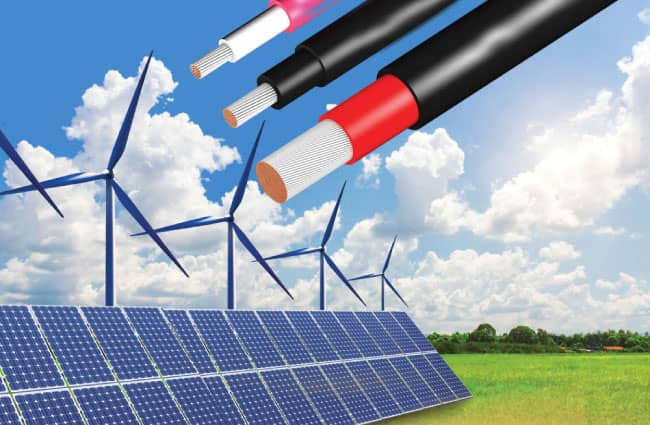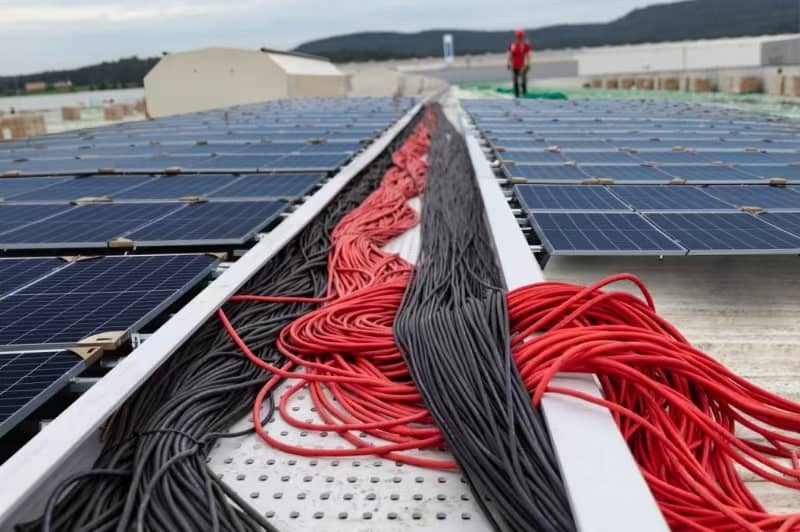U.S. Policies And Global Trends Driving Solar Cable Demand Growth: A Comprehensive Analysis Of Development Prospects And Enterprise Response Strategies
 Apr 16,2025
Apr 16,2025

 Suke
Suke
With the continuous transformation of the global energy structure and the acceleration of the clean energy strategy, the photovoltaic industry is ushering in a new round of golden development. As one of the most important basic components in photovoltaic systems, the market demand for solar cable is rising rapidly, especially in the US market showing explosive growth. This paper will combine the latest policy background of the United States and the global situation, in-depth analysis of the development prospects of solar cable, and put forward countermeasures for export enterprises.
The United States ' policy-driven solar cable market prospects are broad
In recent years, the US government has vigorously promoted the development of new energy, and the introduction of the Inflation Reduction Act (IRA) has become a turning point. Among them, the investment tax credit of up to 30% for solar projects has greatly stimulated the construction boom of photovoltaic projects. In addition, the "Buy American" policy, which requires federally funded projects to prioritize sourcing locally made products, will further drive demand for localized manufacturing, including solar cable.
Not only that, the United States is carrying out grid modernization and infrastructure investment, large-scale ground power stations, industrial and commercial roof distributed power stations synchronous expansion, solar cables as the core connection components of system operation safety, its use and technical requirements to improve the cable UV resistance, high temperature resistance, environmental protection performance put forward a higher standard.
The global energy transition is accelerating, driving the growth of cable exports
Not only the United States, but also major economies around the world, including the European Union, China, India, etc., have also set carbon-neutral targets to accelerate the transition to renewable energy. According to several market research institutions, the global solar cable market will grow at an annual rate of about 15% in the next five years, and the market size is expected to exceed $8 billion in 2030. With the launch of large-scale photovoltaic projects, the demand for high-performance solar cables will continue to be strong, and export enterprises will usher in historic opportunities.
Technological barriers and trade barriers coexist, and the challenges cannot be ignored
Despite the positive outlook, companies also face a number of challenges. First, the United States has strengthened local manufacturing requirements and set higher entry barriers for imported products, especially in terms of product certification, carbon footprint, and environmental compliance management. Products that have not obtained UL4703, UL854, and other certifications will find it difficult to enter the mainstream market channels.
Secondly, technical standards continue to improve, and traditional photovoltaic cables are difficult to meet the needs of high-voltage DC 1500V systems and extreme climate installation environments. At the same time, green energy projects put forward new requirements for carbon emissions, RoHS, and REACH environmental compliance of products.
In addition, the global price competition is fierce, China, India, Vietnam and other manufacturers flocked into the game, product homogenization is serious,and profit margins are compressed.

Coping strategy: How do export enterprises break through?
To stand out in the fierce competition, photovoltaic cable export enterprises need to start from the following aspects:
1. Product upgrading and differentiated positioning.
Develop high-performance solar cable suitable for complex environments, such as low-smoke halogen-free, UV resistance, high temperature resistance, shielded cable, aluminum sheathed cable, double-insulated cable, etc. In particular, 1500V DC cables adapted to the mainstream system architecture in the United States will become the focus.
2. Strengthen the compliance system and technical certification.
Obtaining international certifications such as UL4703, UL854, TUV, and EN 50618 is the "passport" to open the market. At the same time, the establishment of a sound MSDS, safety label system, in line with the United States and European customs and environmental regulations.
3. Explore localization and channel cooperation.
Companies may consider setting up storage centers or lightweight assembly lines in the United States to shorten lead times and improve customer response time. At the same time, it can establish long-term cooperative relations with local EPCs, installers, and distribution channels to form a stable sales network.
4. Diversification of market strategies.
In addition to the United States, it can simultaneously deploy to emerging markets rich in light resources such as Latin America, the Middle East and Africa, to diversify market risks and grasp greater growth space.
Conclusion: To seize the photovoltaic gold track, solar cable has great potential
Driven by the global "dual carbon" wave and the new energy policy in the United States, the solar cable market is accelerating its expansion. Only by following the policy trend, strengthening the technical and compliance strength, and building local service capabilities, can export enterprises win the opportunity in the fierce competition. The next five to ten years will be a key window period for the photovoltaic cable industry to improve quality and efficiency, and global layout.
If you are planning to deploy the U.S. or global solar cable market, establishing a compliance certification path and product differentiation strategy as soon as possible will be a key step to successful export.


 Home
Home How Recent U.S. Policies Are Affecting the NMD 90 Cable Market?
How Recent U.S. Policies Are Affecting the NMD 90 Cable Market?  You May Also Like
You May Also Like

 Tel
Tel
 Email
Email
 Address
Address













